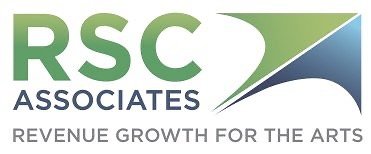TWO TIPS TO ACTIVATE YOUR BOARD IN FUNDRAISING (WHEN YOU’VE TRIED EVERYTHING)
With Catherine Heitz New
I want to address a topic that comes up with EVERY organization we work with regardless of staff or budget size, and that’s: getting your Board more active in fundraising.
Often, this begins with the client sharing they’ve tried everything but still feel stuck. If you’re there, I’m going to share two practical tips to help you move forward.
Listen today to change the way your Board shows up for fundraising.
Read the full transcript below or click the button to listen.
FULL TRANSCRIPT OF THE PODCAST
Today, I want to address a topic that comes up with EVERY organization we work with, regardless of staff or budget size, and that’s: getting your Board more active in fundraising.
Often, this begins with the client sharing they’ve TRIED EVERYTHING but still feel stuck. If you’re there, I’m going to share two practical tips to help you move forward.
Tip 1 — Don’t try to eat the entire sandwich in one bite.
This applies in two ways.
First, trying to get every single member of your Board to become an Asker or play the role of a Development Committee member. It’s simply not possible. If you try, you’ll end up spending more time prodding disengaged members than fully leveraging the ones who are truly willing. And honestly, if everyone did say yes, it would be too much to manage.
Instead, what we recommend is aiming for three to five highly leveraged Board members. Another way to think of this is: only race the horses that will run.
Second, trying to tap the potential of a Board member’s entire Rolodex — or, in more modern terms, their whole Gmail list. That approach is similar to my first example and results in wasting precious time chasing unproductive leads. It’s also so overwhelming to a volunteer that they never get off the starting blocks.
Instead, help them identify their top three prospects — the people they believe they can get to a “yes” most quickly. I’m going to repeat that filter: Who can they get to a yes most quickly?
Work those leads through your donor flywheel. Once that cycle is complete, you can move on to the next three prospects.
Tip 2 — Don’t become a victim of the bystander effect.
So, what’s the Bystander Effect? The Study goes like this: You’re in a public place, and someone in your party has a medical emergency. If you yell out, “Someone call 911!” no one will because they see themselves as bystanders. They’re not involved, someone else will do it, or surely they didn’t mean me. You haven’t given someone direct responsibility. BUT, if you point to someone and say, “You, call 911!” they reliably will.
The same thing happens at Board meetings. A general call for help is rarely effective. But when you follow up personally and say, “You are one of the few people who can help make this successful,” that Board member will feel called to act.
Yes, it takes a little more time upfront. But it pays off. With engaged Board members who feel personally accountable and excited to contribute.
So, remember: don’t eat the sandwich in one bite, and don’t fall into the bystander trap. Those two shifts can change the way your Board shows up for fundraising.



